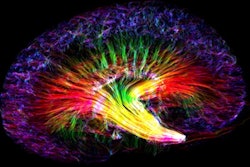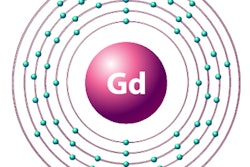Dear AuntMinnie Member,
The top radiology story for the past week is an interesting animal: It's based on a research study produced not by academic researchers but by a patient advocacy group.
The group is the Lighthouse Project, and it represents patients who have been affected in some way after receiving a gadolinium-based contrast agent (GBCA) as part of their MRI scans. The group has dedicated itself to learning more about the potentially toxic effects of gadolinium, both from acute allergic reactions and from retention of the material after scans.
The current paper focuses on gadolinium concentration in the urine of patients after they were scanned. The Lighthouse researchers found what they believed to be elevated levels of gadolinium shortly after the scans, and trace elements up to a year later.
What does it all mean? No one is completely sure, but the study does add to the body of knowledge regarding gadolinium retention.
Top 5 trends from RSNA
RSNA 2018 may have ended two weeks ago, but AuntMinnie members are still clearly interested in processing what happened in Chicago.
Our article listing the top five trends from McCormick Place was the second most-read article for the week. Our editors decided the top trend was artificial intelligence (AI) -- any idea what the other four were? You'll have to read the story to find out.
Our video slideshows of products launched at RSNA 2018 by the Big Four multimodality vendors have also proved popular. To view them, visit the RADCast @ RSNA at rsna.auntminnie.com.
Dual-energy mammo with AI
Finally, be sure not to miss our article on the use of dual-energy mammography technology in combination with an AI algorithm. University of Chicago researchers found that by mapping the biological composition of tumors, the technique could help determine which suspicious lesions are benign -- and help women avoid biopsies.



.fFmgij6Hin.png?auto=compress%2Cformat&fit=crop&h=100&q=70&w=100)




.fFmgij6Hin.png?auto=compress%2Cformat&fit=crop&h=167&q=70&w=250)











